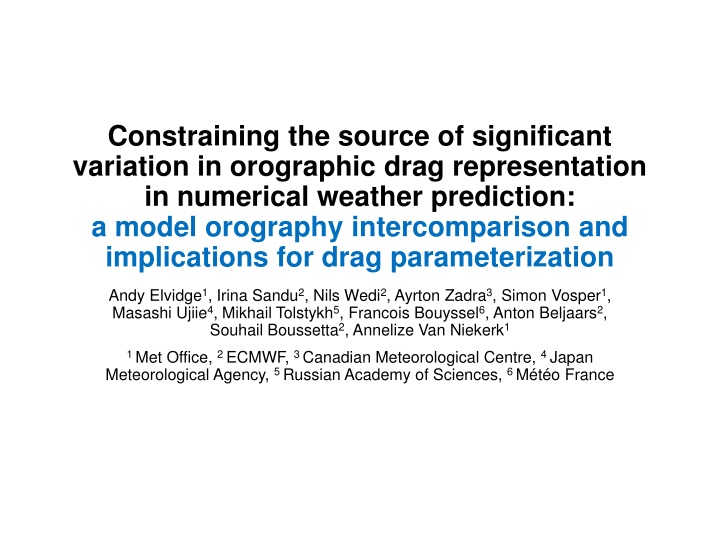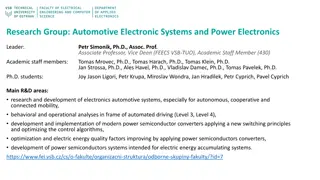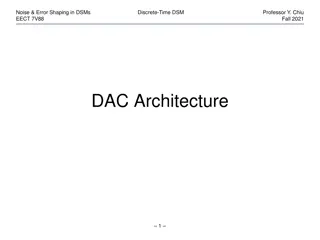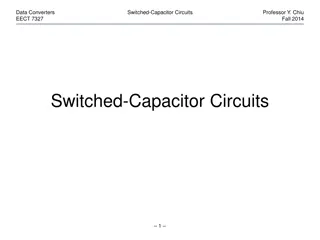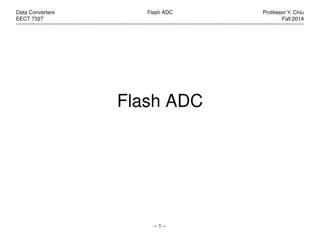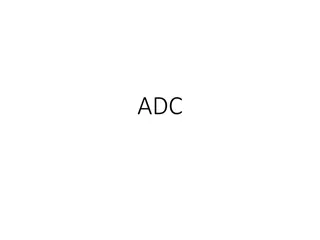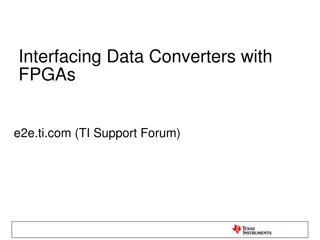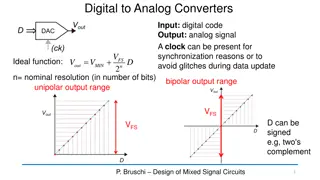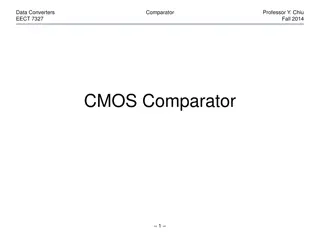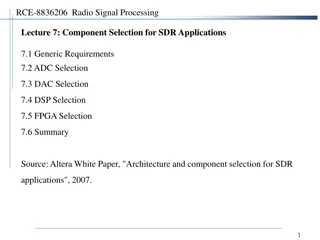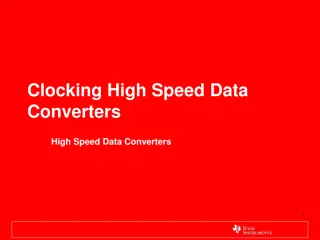Data Converters: Integration ADC by Professor Y. Chiu - Fall 2014
This series of images portrays different types of integration analog-to-digital converters (ADC) discussed in the course taught by Professor Y. Chiu in the fall of 2014. The images illustrate Single-Slope Integration ADC, Dual-Slope Integration ADC, Op-Amp Offset effects, and Subranging Dual-Slope ADC. Each ADC design includes details on control logic, signal paths, comparator functions, conversion speeds, and the impact of factors like op-amp offset and integration times on the ADC performance. The images also highlight the components required, such as capacitors, current sources, and clocks, to achieve accurate analog-to-digital conversion.
Download Presentation

Please find below an Image/Link to download the presentation.
The content on the website is provided AS IS for your information and personal use only. It may not be sold, licensed, or shared on other websites without obtaining consent from the author.If you encounter any issues during the download, it is possible that the publisher has removed the file from their server.
You are allowed to download the files provided on this website for personal or commercial use, subject to the condition that they are used lawfully. All files are the property of their respective owners.
The content on the website is provided AS IS for your information and personal use only. It may not be sold, licensed, or shared on other websites without obtaining consent from the author.
E N D
Presentation Transcript
Constraining the source of significant variation in orographic drag representation in numerical weather prediction: a model orography intercomparison and implications for drag parameterization Andy Elvidge1, Irina Sandu2, Nils Wedi2, Ayrton Zadra3, Simon Vosper1, Masashi Ujiie4, Mikhail Tolstykh5, Francois Bouyssel6, Anton Beljaars2, Souhail Boussetta2, Annelize Van Niekerk1 1 Met Office, 2 ECMWF, 3 Canadian Meteorological Centre, 4 Japan Meteorological Agency, 5 Russian Academy of Sciences, 6 M t o France
Height: Height of subgrid-scale mountains, given by the grid-box standard deviation of subgrid- scale orography (SSO) Power spectra of mean (resolved) grid box orography: Slope: Grid box SSO gradient Anisotropy: Ridge-like (0) to dome- like (1) SSO Relatively higher sub-grid orography 2.7 x GLOBE GTOPO30 Subgrid/resolved orographic heights vs resolution, data source, strength of orographic filter 3 x Orientation: SSO ridge angle 7.2 x4 x 4 x 2.2 x SRTM30 2.2 x Relatively higher resolved orography All SSO fields vary significantly across models
Offline SSO field sensitivity experiments (using Lott and Miller scheme) show: Global-average stress most sensitive to inter-model variability in slope, but both slope and height influential locally Local Froude number controls polarity and strength of drag response to variability in height Influence of anisotropy and orientation fields relatively small Effect on global surface stress
Offline SSO field sensitivity experiments (using Lott and Miller scheme) show: Global-average stress most sensitive to inter-model variability in slope, but both slope and height influential locally Local Froude number controls polarity and strength of drag response to variability in height Influence of anisotropy and orientation fields relatively small Effect on global surface stress IFS experiments where SSO fields are substituted for MetUM SSO fields: Combined effect of height & slope required to explain response in Psfc Positive polar pressure signature resembles known MetUM model bias All fields Height&Slope substituted substituted substituted substituted substituted substituted Height Slope Orientation Anisotropy
Offline SSO field sensitivity experiments (using Lott and Miller scheme) show: Global-average stress most sensitive to inter-model variability in slope, but both slope and height influential locally Local Froude number controls polarity and strength of drag response to variability in height Influence of anisotropy and orientation fields relatively small Effect on global surface stress IFS experiments where SSO fields are substituted for MetUM SSO fields: Combined effect of height & slope required to explain response in Psfc Positive polar pressure signature resembles known MetUM model bias All fields Height&Slope substituted substituted substituted substituted substituted substituted Height Slope Orientation Anisotropy Inter-model variability in SSO fields can be of first- order importance to the variability in drag seen across models IFS MetUM Relative diff. IFS Jan, 2012 Dec, 2016 IFS with MetUM SSO fields Relative diff. Zadra (2013)
